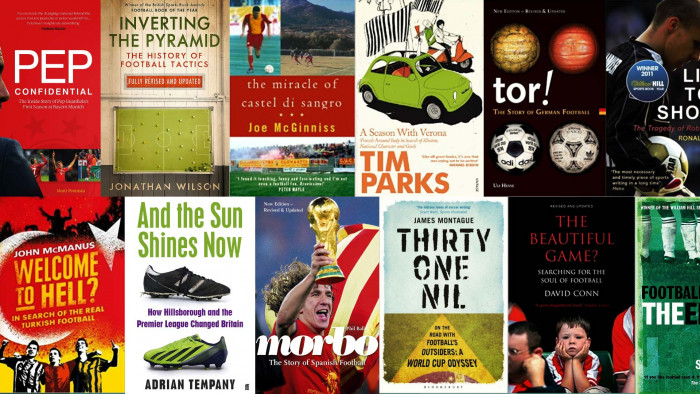Tom Wheatley of ShortList blogs about his progress so far
Monday, 2 June 2014
 Anyone who's seen a triathlon at any point will know it's a fairly complicated race. I remember being sat in a pub watching the London Olympics a couple of years ago whilst some of my friends talked about T1s and T2s. I nodded and smiled silently until they eventually stopped and moved on to sailing, at which point I started nodding again. By the time they'd moved onto dressage I gave up and started playing the fruit machine.
Anyone who's seen a triathlon at any point will know it's a fairly complicated race. I remember being sat in a pub watching the London Olympics a couple of years ago whilst some of my friends talked about T1s and T2s. I nodded and smiled silently until they eventually stopped and moved on to sailing, at which point I started nodding again. By the time they'd moved onto dressage I gave up and started playing the fruit machine. A year later I was taking part in my first triathlon and the various words and phrases popped back into my life. This time I'd actually have to learn what they meant. I picked up a book covering everything from basic terminology to a 12 week triathlon training plan leading up to an event. For the first few pages I was fairly interested as I displayed the front cover to everyone else on the bus; however I realised by about the third chapter that a 300-page book on extremely detailed sport information wasn't for me. It was this preparation which resulted in me being so confused on the day of the actual triathlon. Something which meant on more than one occasion marshals had to shout warnings at me as I made my way around the course like a bumbling Norman Wisdom.
So this year I was invited to a training day at Dorney Lake in Berkshire; the same location the ShortList triathlon is taking place. A hands on six hour run-through of each element of a triathlon in the place I'd actually be racing a few months later was too good to miss out on. So I packed my wetsuit and running kit, jumped on a train at Clapham Junction with my bike and set out to Windsor & Eton Riverside station.
The training day was ran by the coaching team at RG Active, a company that specialises in multi-sport training and events around the London area. I'd never actually undertaken any specific triathlon training save for a few swimming lessons so I wasn't entirely sure what to expect. I knew triathlons were complicated but I had no idea how they could fill six hours of my Sunday on them.
Dorney Lake is home to a number of triathlons over the year and as I cycled my way around to the training building I watched as hundreds of people wandered around preparing for a sprint triathlon. As we registered one of the coaches took us over and began explaining the course as the horn sounded the first wave of the swim leg. Everyone stared, some with excitement and others with an underlying fear as the competitors sped through the water. I heard a couple behind me who were amazed at how fast they were going. I sighed as memories flooded back of myself bobbing around at the back of the pack the year before.
We were split into three groups of about 25 people and directed to our first training session of the day; mine was running. As someone who's spent the past few years running a fair bit I was worried the next hour and 45 minutes was going to be fairly basic. To be honest I wasn't actually sure how you could even fill an hour and 45 minutes explaining running to a complete beginner so I imagined this would be the least useful session of the day.
Luckily my assumptions were wrong. The session, taken by two coaches from Core Active Conditioning, was an impressively detailed overview of running technique. The main bulk of the session saw us taking part in a number of drills and stretching techniques designed to show us how to develop our running style. Up until this point I always thought the best way to improve running was to do speed and endurance training along with core work, however this session looked in detail at how to use the Pose method, a technique used to minimize injuries and improve performance. There's an explanation that covers it far better than I can here.
My second session was bike training. This took the form of a much more technical run-through in a classroom environment. As well as talking through the mechanical aspects of a bike and how to effectively utilise the gears within the race, we looked at the various rules and regulations surrounding the cycling segment.
Cycling in a triathlon is by far the most complicated part and based on the fact it affects both the transition stages, can have an enormous impact on your overall time. After looking at the rules surrounding drafting (I won't try to explain it but there's a nice retro-styled overview here), we went outside to practice setting up our transition area along with mounting and dismounting. None of which I had a clue about before. It turns out there's quite an art to the intricacies that could shave minutes of your overall time; although I felt I had a long way to go until I'd need to worry about it myself.
After a lunch session in the sunshine where training expert John Brame took us through an impromptu swimming demonstration, we started the last session of the day. For me, like many others there, open water swimming was the real focus of my concerns. I was ready to soak up as much information as possible.
The open water session took place in a secondary area away from the still continuing triathlon. We started from scratch with tips on putting on a wetsuit and goggles before stepping into the water. This was the first time I'd used my new BlueSeventy Sprint wetsuit in England and I was worried it wouldn't match up to the water temperature. Luckily after a couple of minutes I realised it was more than enough and I happily bobbed about as we performed the first set of drills.
For the next hour we swam back and forth around buoys, replicating a series of eventualities likely to happen within the actual race. As well as deep water starts and how to effectively get round a buoy we focused heavily on sighting whilst doing front crawl (something I realised I needed to do a fair bit of work on as I swam head first into a returning group). The session finished with us exiting the water as if finishing a race and looking at how to remove a wetsuit before entering the first transmission phase.
After six hours of intensive information, along with a fair bit of swimming, the day was over; It went quickly though. The training day covered far more than I thought it would with a good weighting of theoretical and practical elements to ensure everyone taking part benefited. There were smiles and thanks all round as we chatted to the trainers and flung questions at them before finally disappearing into the Buckinghamshire countryside.
If you're new to triathlons or feel like you'd benefit from some hands on group training then I strongly advise you take a look at future events. Whether you're scared of one of the elements, have a shed-load of questions and don't know who to ask or simply want the chance to perfect existing skills, the day is well worth investing in.
The day was hosted by the coaching team at RG Active in association with Human Race events. For similar training sessions you can go to the Human Race website or read more about RG Active coaching here.
(Images: RG Active)
To enter the ShortList Tri challenge follow the link:
See @ShortListTri for regular updates
Latest


Best gifts for runners that they'll actually want and use


The best protein bars to fuel your workouts









